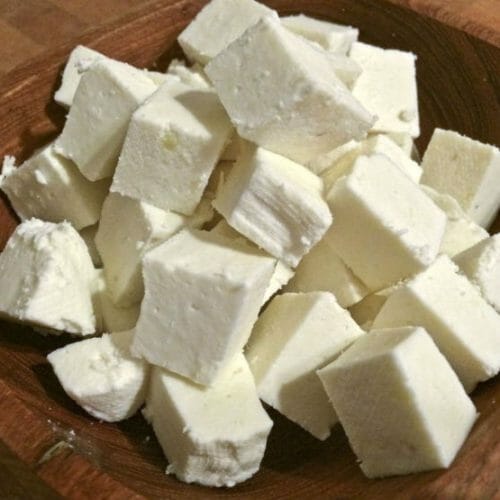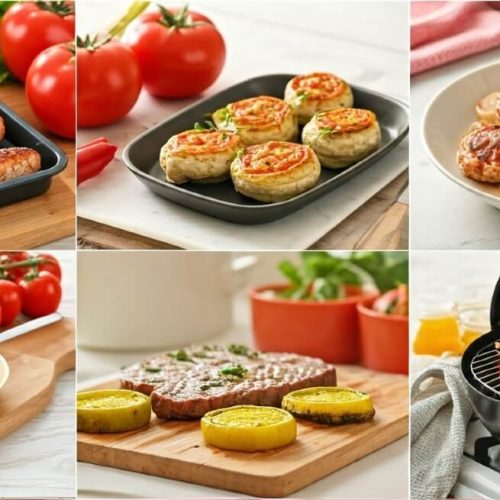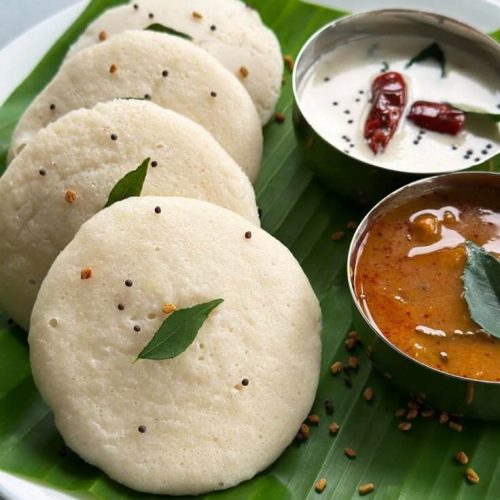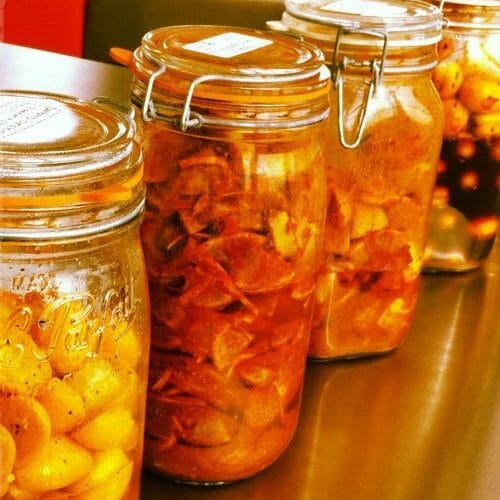Dumplings are little snacks loved all over the world. While in India, we savour momos found in different street food stalls and modak; people in China find these tiny delights in Xiao Long Bao and Pierogi. All these delicacies have one thing in common: their shape and size, even though the tastes differ. The good news is that you can make these chewy dumplings right at home! This blog covers everything you need to know about dumplings, from their types to their easy-to-make recipe. Ready for the dumpling hunt? Let’s begin.
15 Dumpling Delights From Across The World
Let’s travel through the world and discover different types of Asian dumplings.
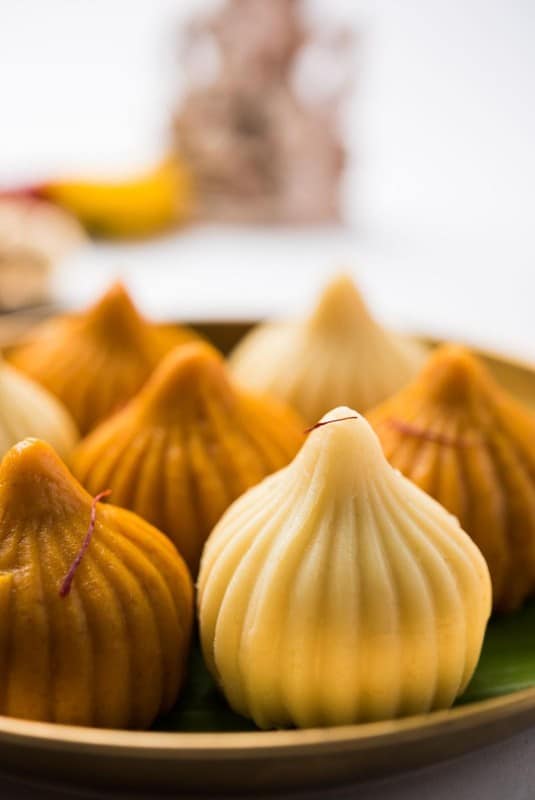
A plate of modak
1. Modak: The Sweet Delight
Modak is a traditional Indian dumpling that many people in Maharashtra love. These sweet dumplings, often enjoyed with sweet soy sauce, are often eaten during the festival of Ganesh Chaturthi. They are thought to be Lord Ganesha’s favourite food.
The outer shell of a Modak is made from rice flour. This makes it soft and chewy. Inside, there is a sweet filling. The usual filling contains jaggery, grated coconut, and cardamom powder. Together, these ingredients create a fantastic mix of flavours.
Modak gives a lovely burst of sweetness in every bite when steamed just right. It’s a taste of tradition that you will never forget!
2. Gujiya: A Holi Festival Staple
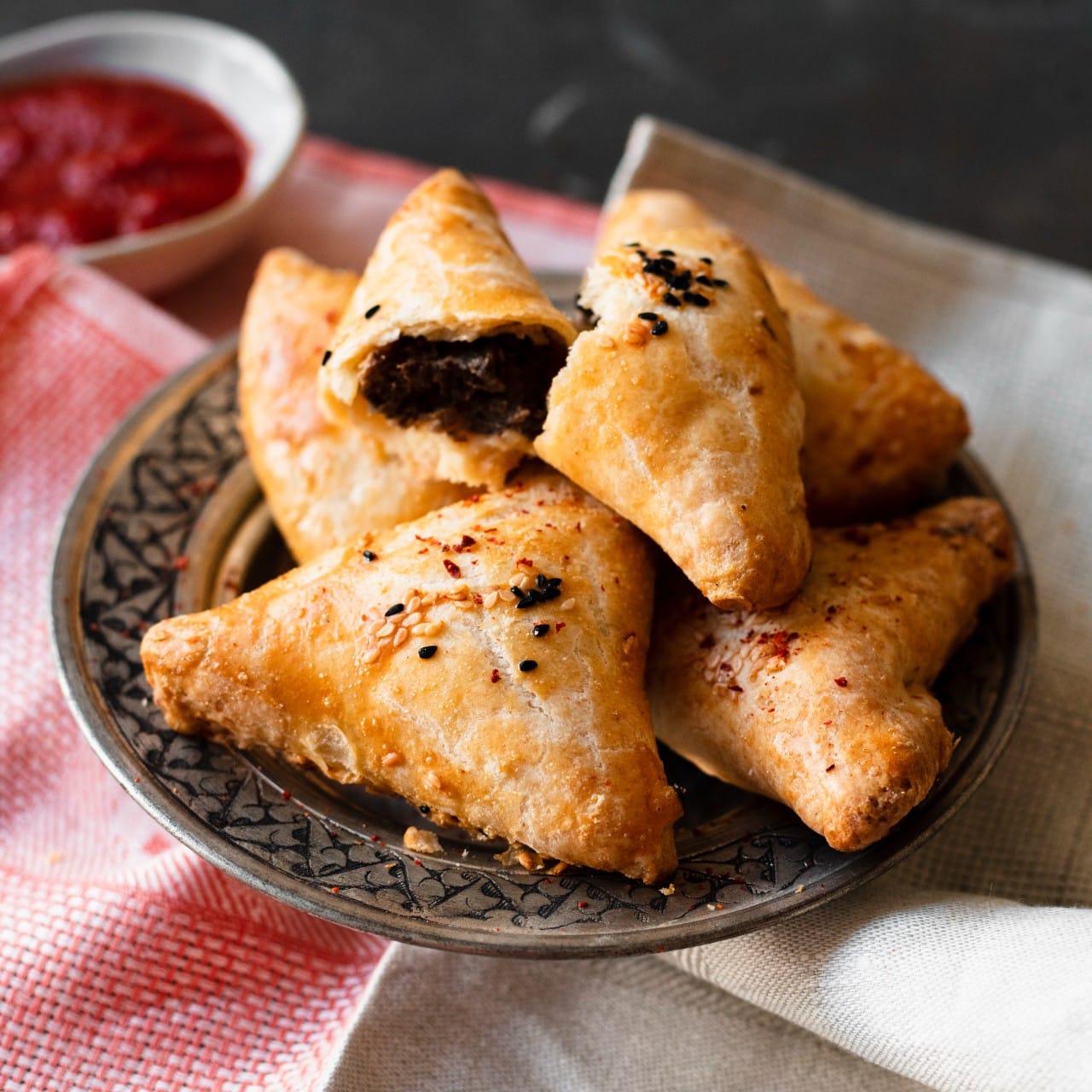
A plate of gujiya
Gujiya is a special treat that plays a big role during Holi, the festival of colours in India. These sweet dumplings are cooked until they are crispy and crunchy. They are made from wheat flour. The dough is shaped into small circles and filled with a mix of khoya (dried milk solids), chopped nuts like cashews and almonds, and sugar.
Once the Gujiyas are filled, they’re deep-fried till they turn a lovely golden brown. Some people like to dip them in sugar syrup to make them extra sweet and indulgent. You can even experiment with the filling—many enjoy a lentil-based filling for a unique twist.
3. Kozhukattai – The South Indian Way
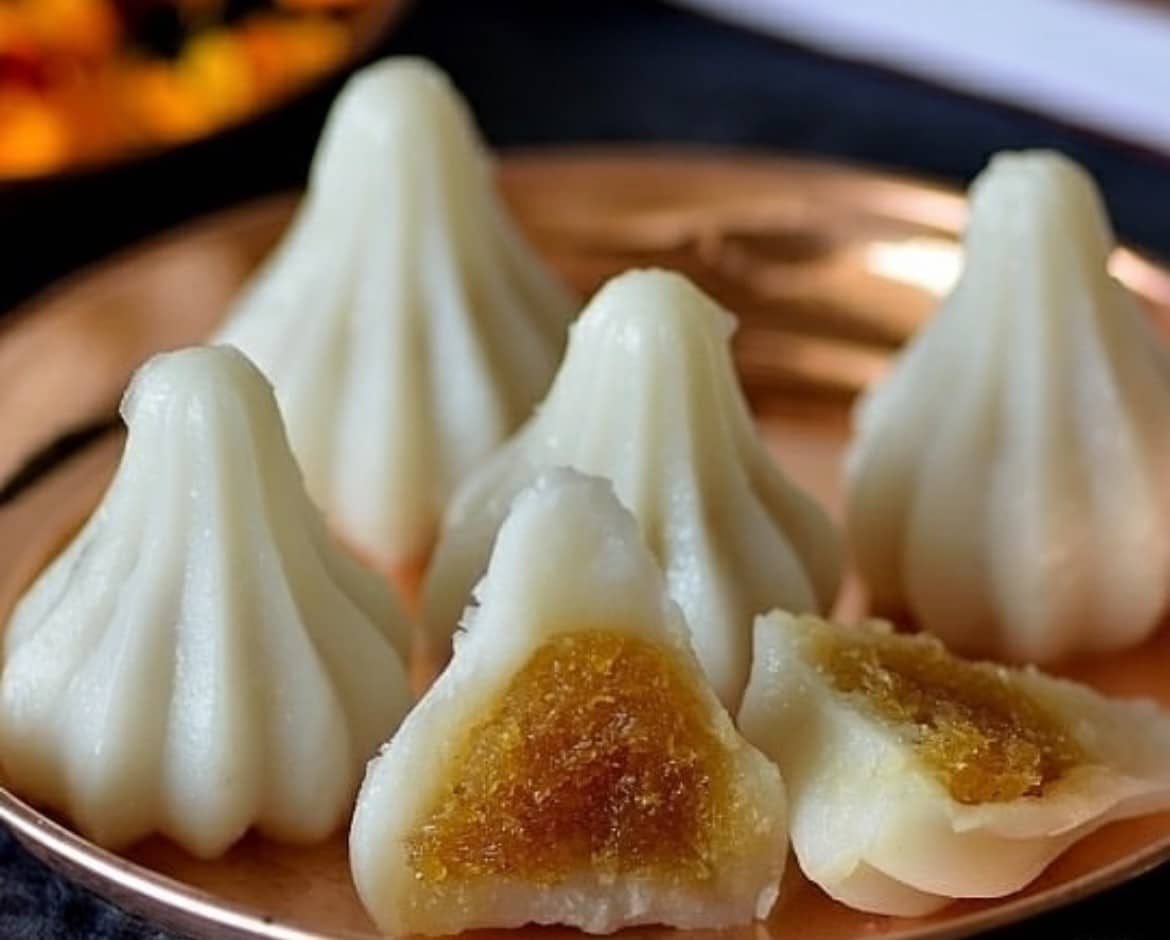
Plate of Kozhukattai
Source: @asmallbitepriya via Instagram
Kozhukattai is a traditional South Indian dumpling made from rice flour dough. These dumplings are filled with either a sweet mixture of coconut and jaggery or a savoury filling of lentils and spices. Commonly prepared during Ganesh Chaturthi, Kozhukattai is steamed to perfection, resulting in a soft, melt-in-your-mouth texture. It is a wholesome and flavourful snack with deep cultural and religious significance.
4. Pitha – East India’s Gift
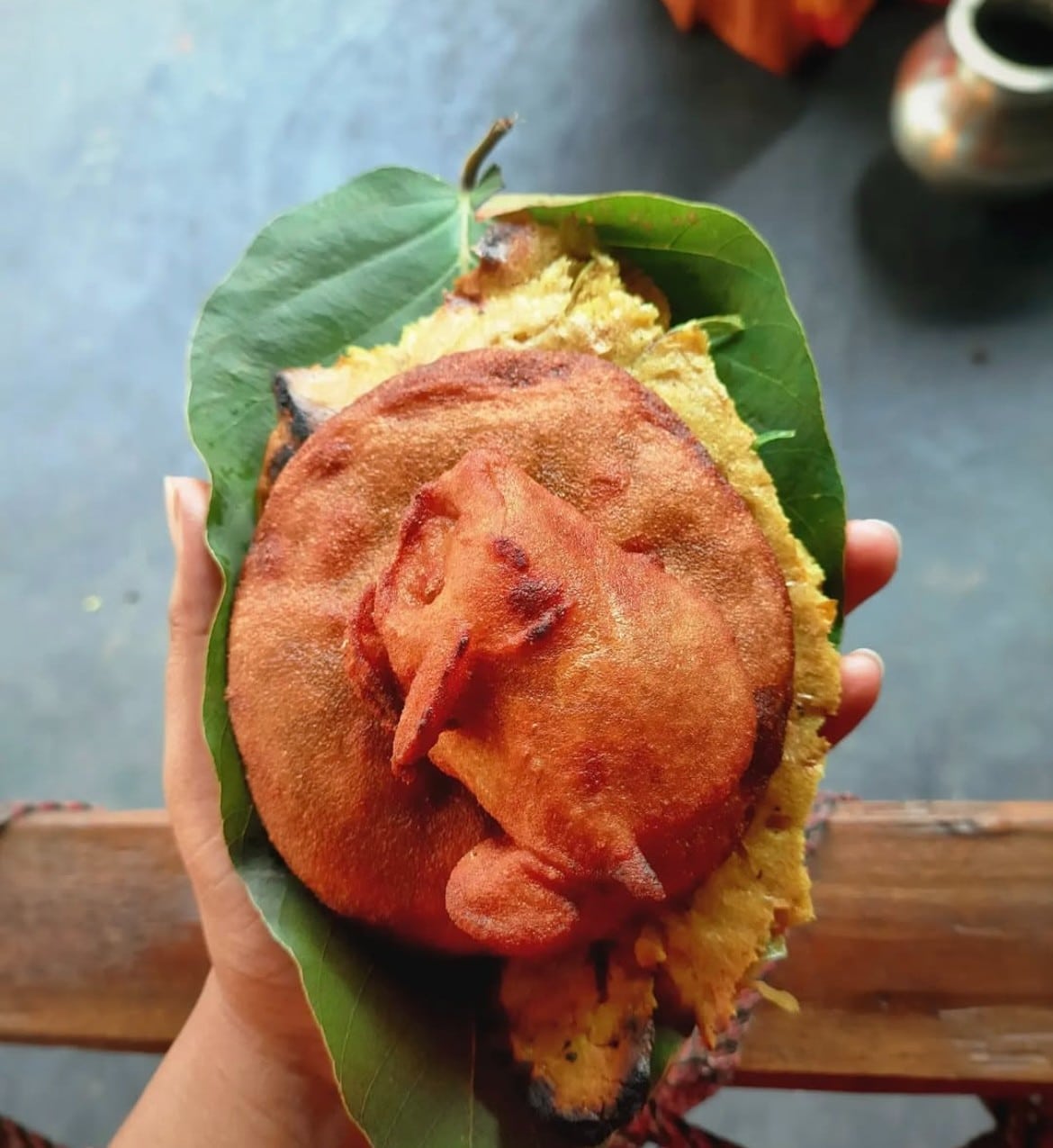
Pitha
source: @torehsutom via Instagram
Pitha is a versatile dumpling from Eastern India, particularly popular in Assam, Odisha, and West Bengal. These dumplings can be sweet or savoury, with variations like steamed, fried, or even roasted. Sweet Pithas are often stuffed with jaggery and coconut, while savoury versions may include spiced lentils or vegetables. Traditionally prepared during harvest festivals, Pithas are a symbol of celebration and community.
Also, check out: Enduri pitha recipe.
5. Samosa – Savored All Over India
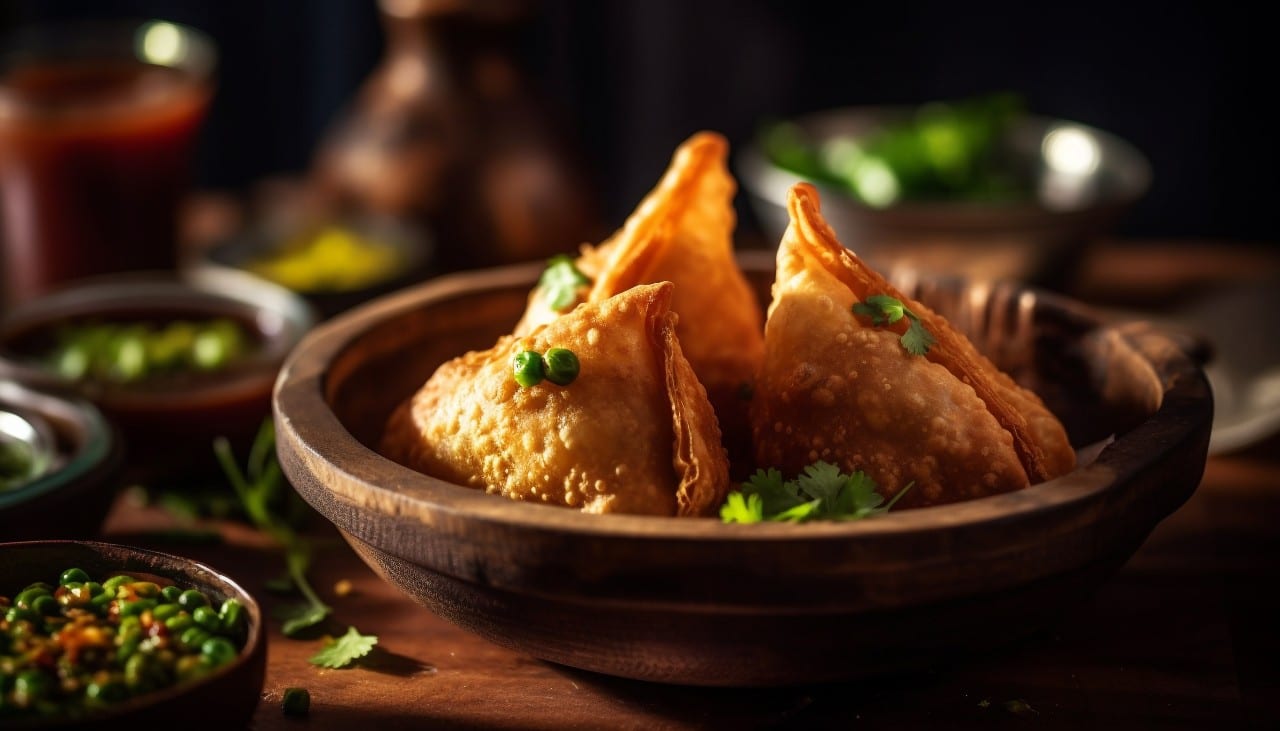
Bowl of samosas
Samosas are iconic Indian snacks, often considered a cousin of dumplings due to their stuffed pastry preparation. These deep-fried, triangular treats are filled with spiced potatoes, peas, or minced meat. Samosas are widely enjoyed across India and abroad, offering a crispy outer shell and a flavourful, hearty filling that pairs beautifully with tamarind or mint chutney.
6. Dal Pitha – Bihar’s Delicacy
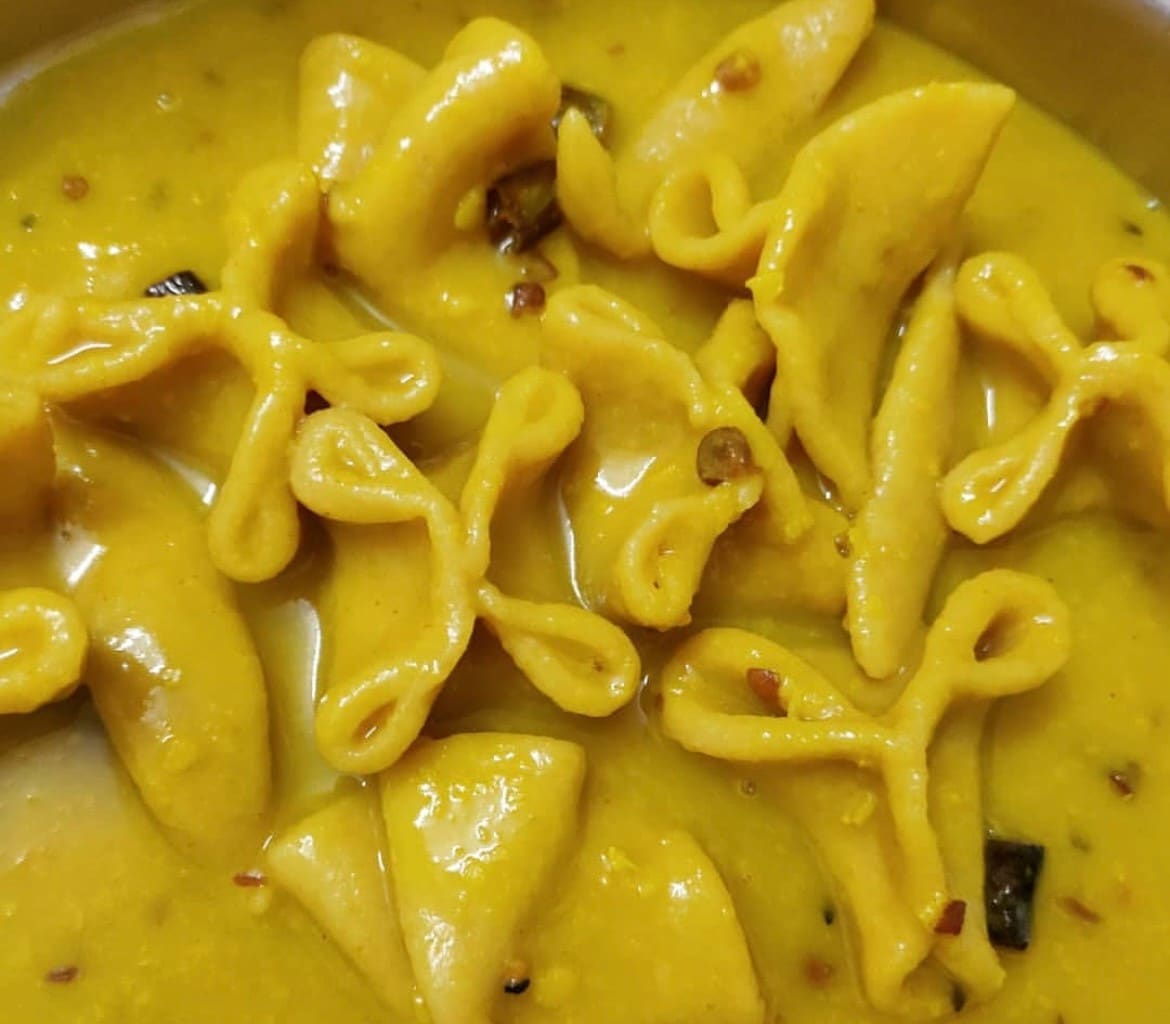
Dal Pitha
source: @Bhukhadduniya7 via Instagram
Dal Pitha is a savoury delicacy from Bihar and Jharkhand. It is made with a dough made with rice or wheat flour. The dumplings are stuffed with a spiced lentil paste, shaped into crescent or cylindrical forms, and steamed or boiled. Dal Pithas are often served with chutneys or curries, making them nutritious and comforting meals deeply rooted in rural traditions.
7. Undhiyu Muthiya – Gujarat Savoury
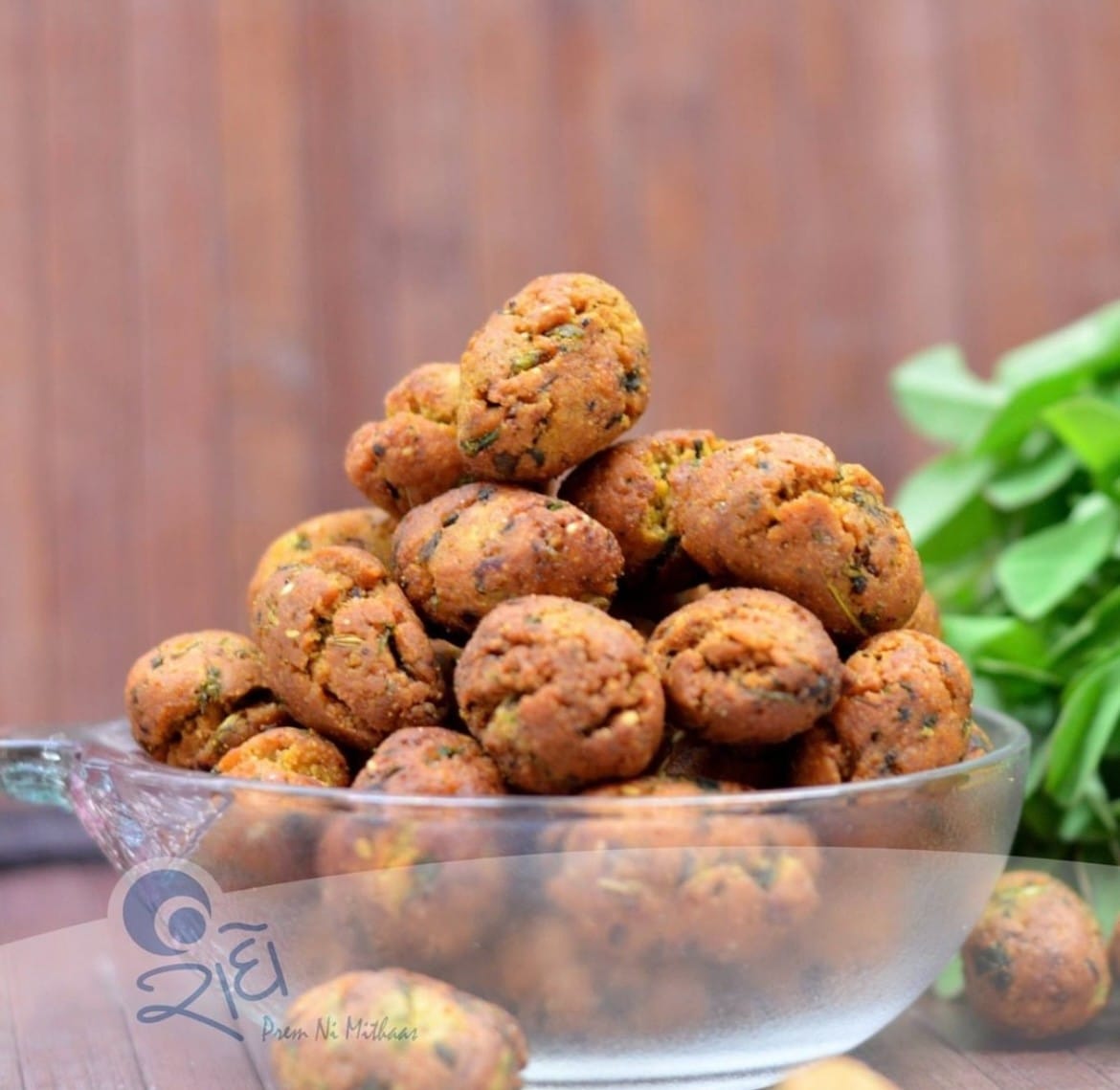
Bowl of muthiya
source: @Premnimithaas via Instagram
Muthiya, part of the traditional Gujarati dish Undhiyu, is a steamed or fried dumpling made from fenugreek leaves, gram flour, and spices. These dumplings add a unique texture and earthy flavour to the vegetable medley that forms Undhiyu, a winter speciality. Soft yet firm, muthiyas soak up the spices and flavours of the dish, making them an integral part of Gujarati cuisine.
8. Xiao Long Bao: The Soup Dumpling Marvel
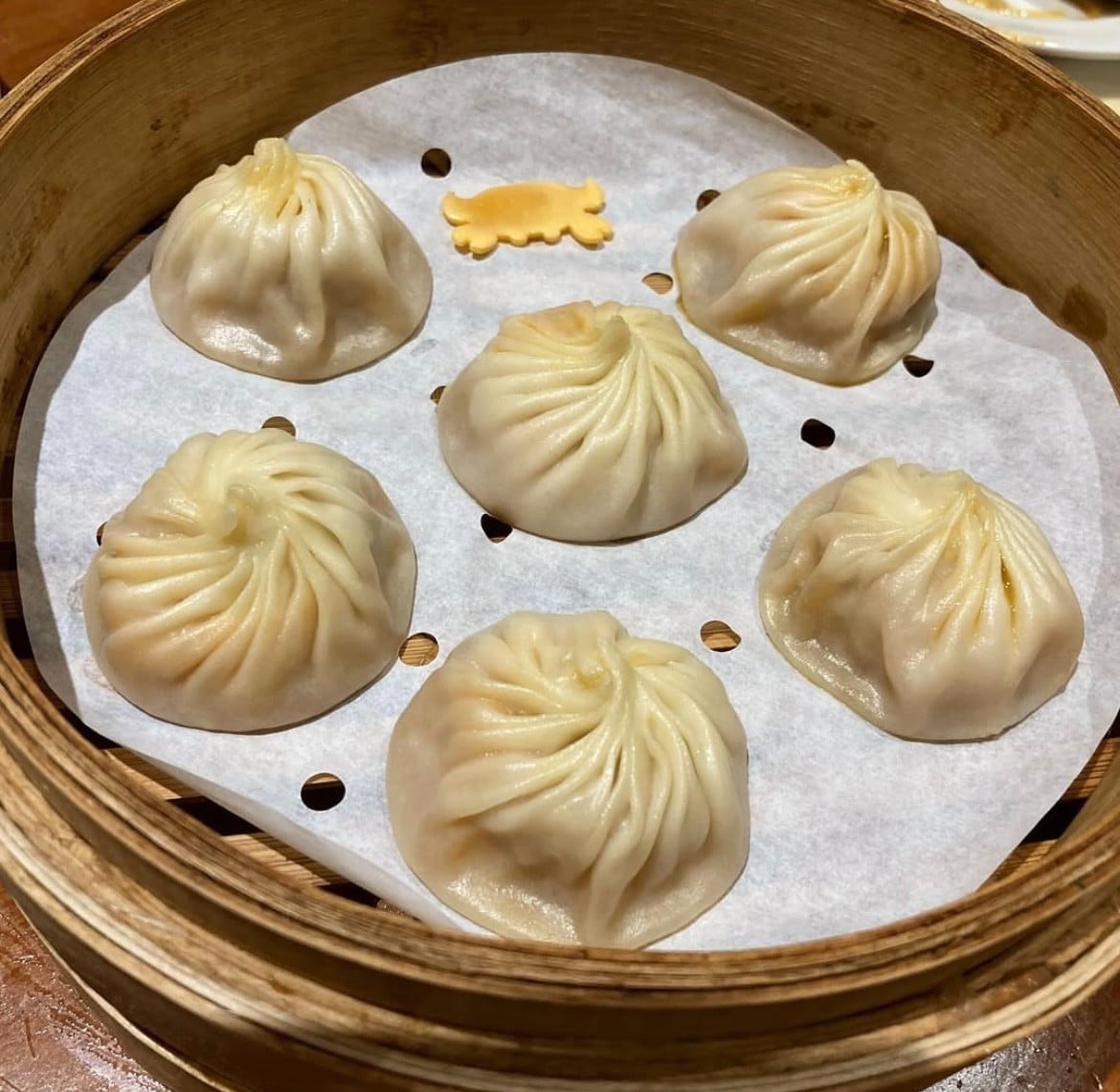
Xiao long bao
source: @mr_kiyongkim via Instagram
Our first stop is China, where we have the famous Xiao Long Bao, or soup dumplings, straight from Shanghai. These little delights are one of the best types of Chinese dumplings, and they are a true show of their incredible cooking skills.
What makes Xiao Long Bao so special is the delicious broth tucked inside the thin, delicate wheat flour dough. As the dumplings steam, the gelatin melts, turning into a warm, savoury soup that feels both comforting and satisfying.
Usually, these dumplings are filled with ground pork and spiced with ginger and scallions. Eating Xiao Long Bao is a fun experience for your taste buds. Just be careful not to burn your mouth with the hot soup while you enjoy this unique dish.
9. Pierogi: Eastern European Comfort Food
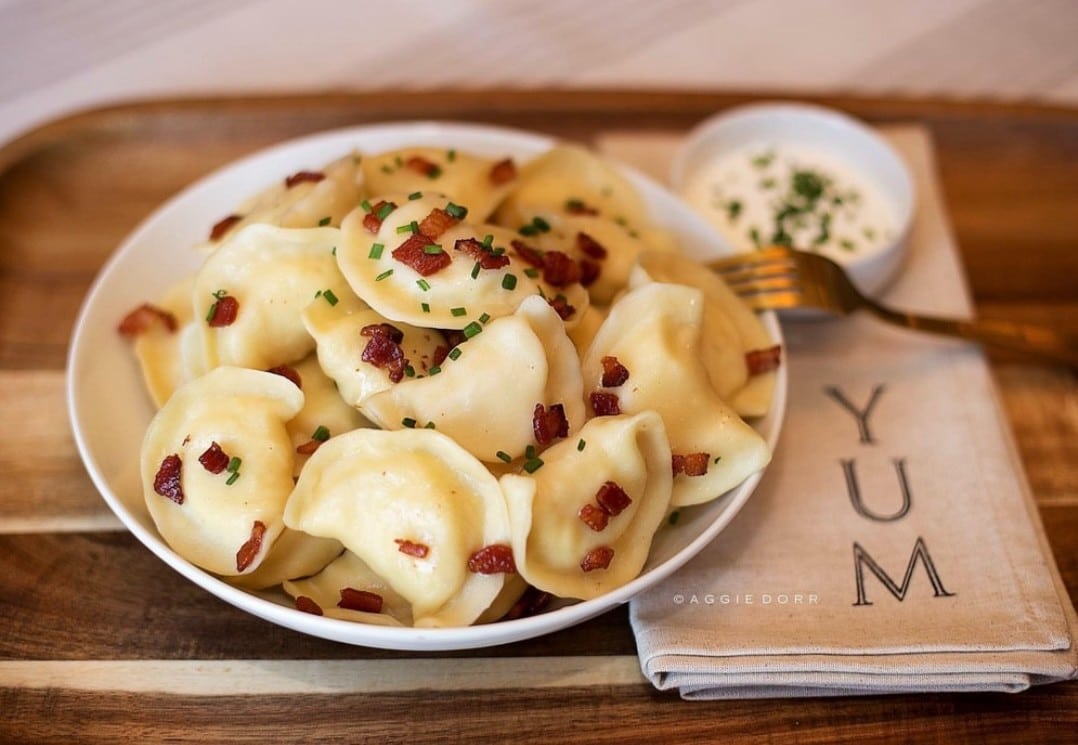
Pierogi
@source: halle.home.kitchen via Instagram
Our dumpling journey now brings us to Eastern Europe. Here, we discover our favourite dish called Pierogi. This is a key part of Polish food: pure comfort food.
These half-moon dumplings are made from dough with flour, water, and sometimes eggs. They have a nice, chewy texture. Pierogi can be savoury or sweet, making them suitable for everyone.
You can enjoy classic flavours like potato and cheese or sauerkraut and mushroom. There are so many options. You can boil, pan-fry, or bake Pierogi, making them a cosy meal or a tasty side dish.
10. Mandu – The Korean Delight
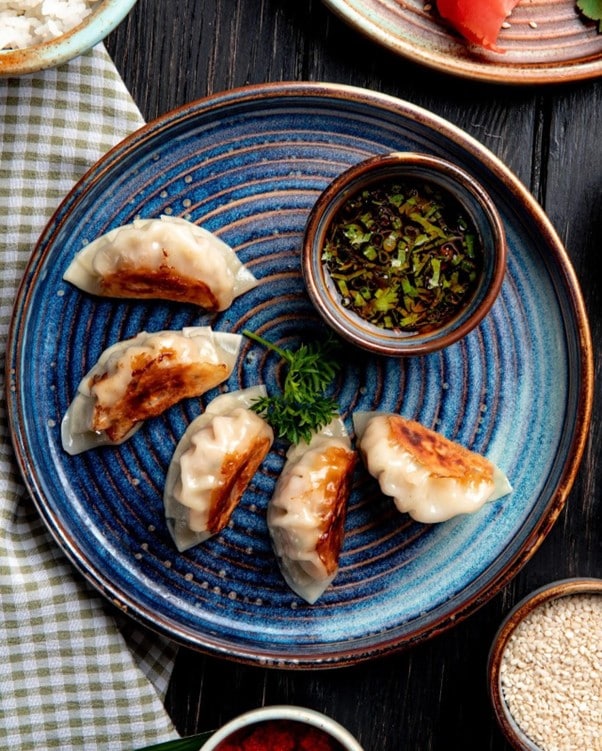
Top view of plate of mandu
Korean mandu are versatile dumplings that can be steamed, boiled, fried, or added to soups. Filled with a mixture of minced meat, tofu, glass noodles, and vegetables, mandu vary in flavour depending on the region of Korea. For example, kimchi mandu features a spicy kick, while classic pork or beef versions are milder. Often enjoyed with soy-based dipping sauces, mandu is a staple in Korean households, especially during Lunar New Year celebrations.
11. Ravioli – The Italian Dream
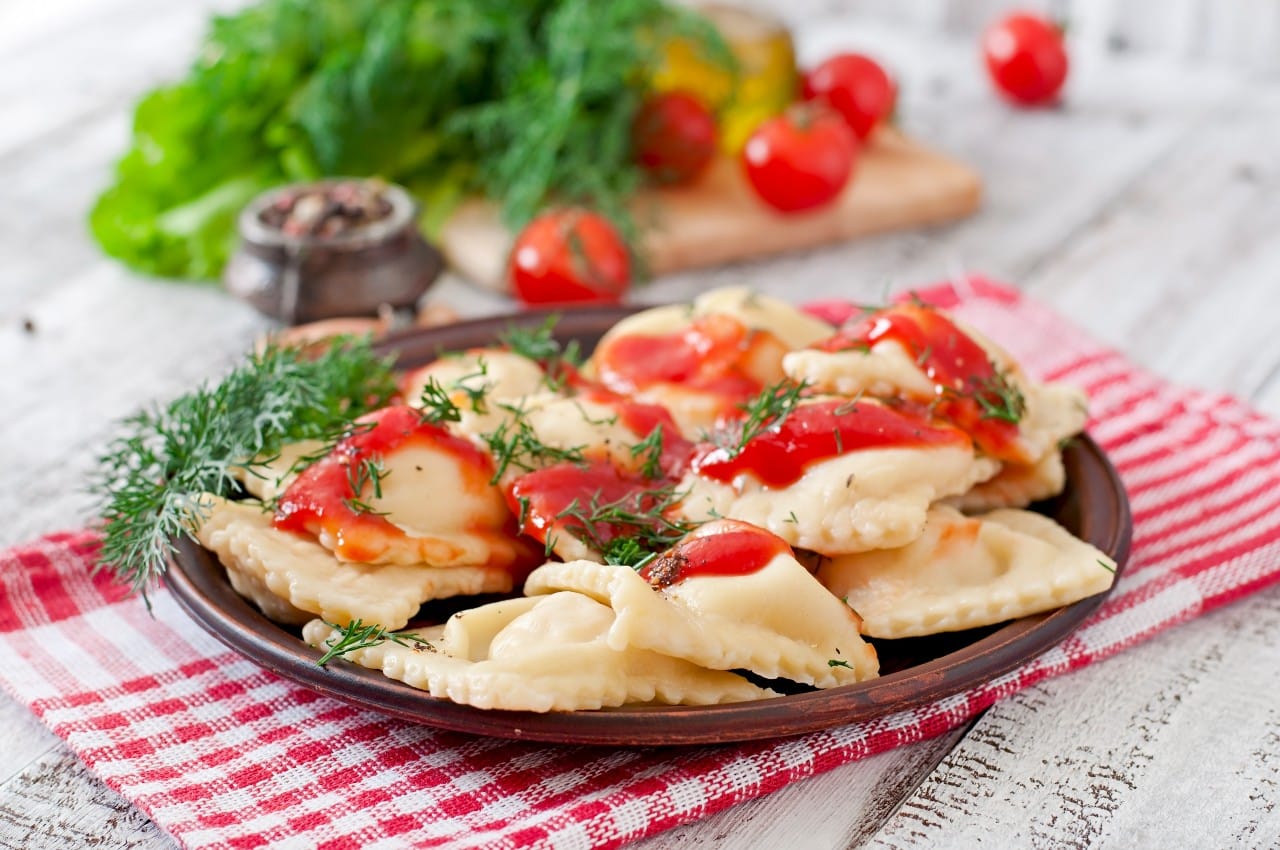
delicious ravioli with tomato sauce dill
Ravioli are Italian dumplings made from thin sheets of traditional pasta dough filled with a variety of ingredients such as ricotta, spinach, meat, or seafood. These pockets of flavour are typically boiled and served with sauces like marinara, butter sage, or cream-based blends. Ravioli is a cornerstone of Italian cuisine, celebrated for its versatility and the endless possibilities of fillings and accompaniments.
12. Empanadas – The Latin American Grandeur
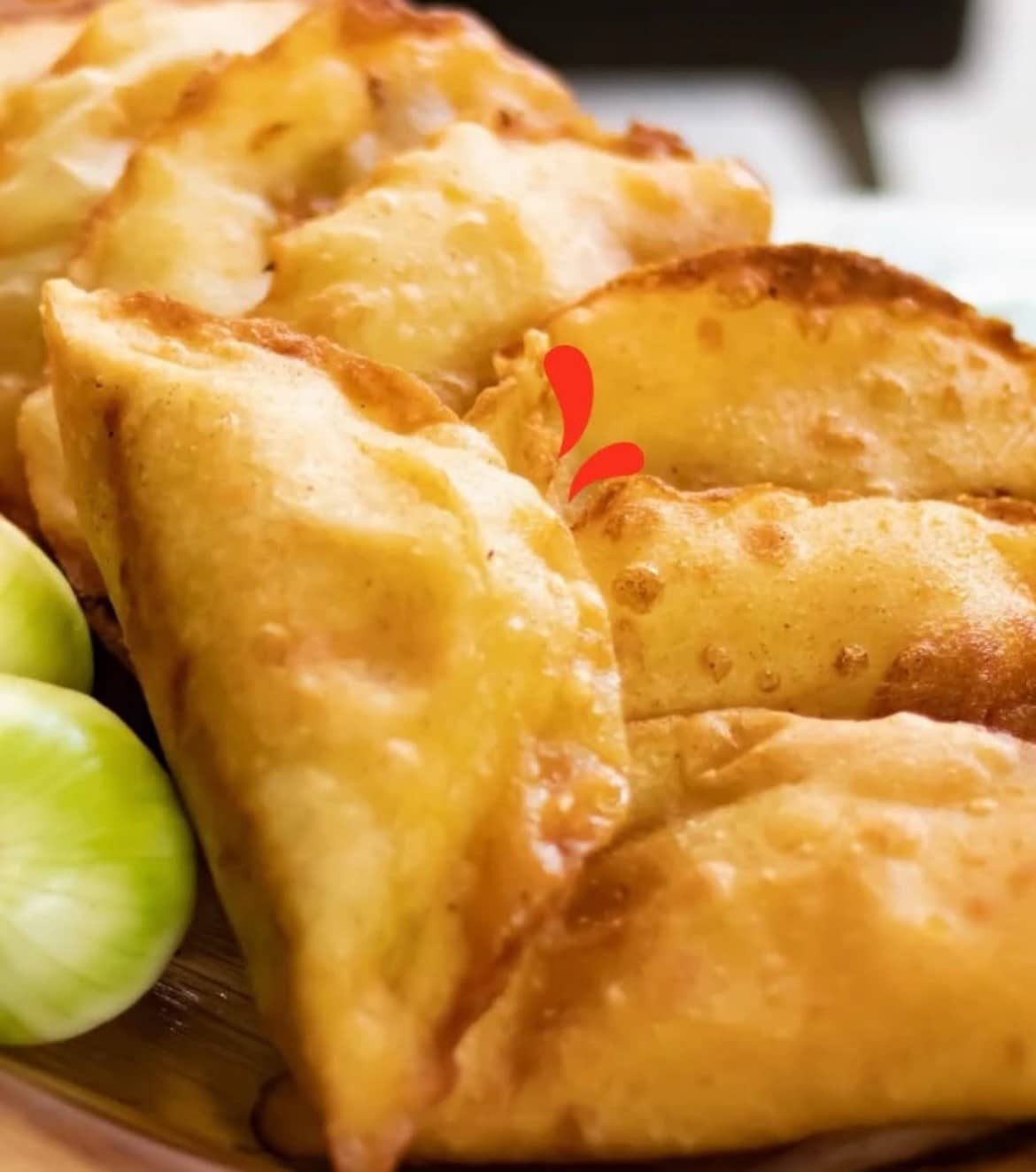
Empanadas
source: @degusta.venezuela via Instagram
While larger than traditional dumplings, empanadas share the essence of stuffed pastries. In Latin America, empanadas are made with flaky dough and filled with spiced meat, cheese, or vegetables. They can be baked or fried, with regional variations influencing the fillings and spices. Empanadas are versatile snacks or meals enjoyed for their portability and satisfying flavours.
13. Manti – Tiny Presents From The Middle East
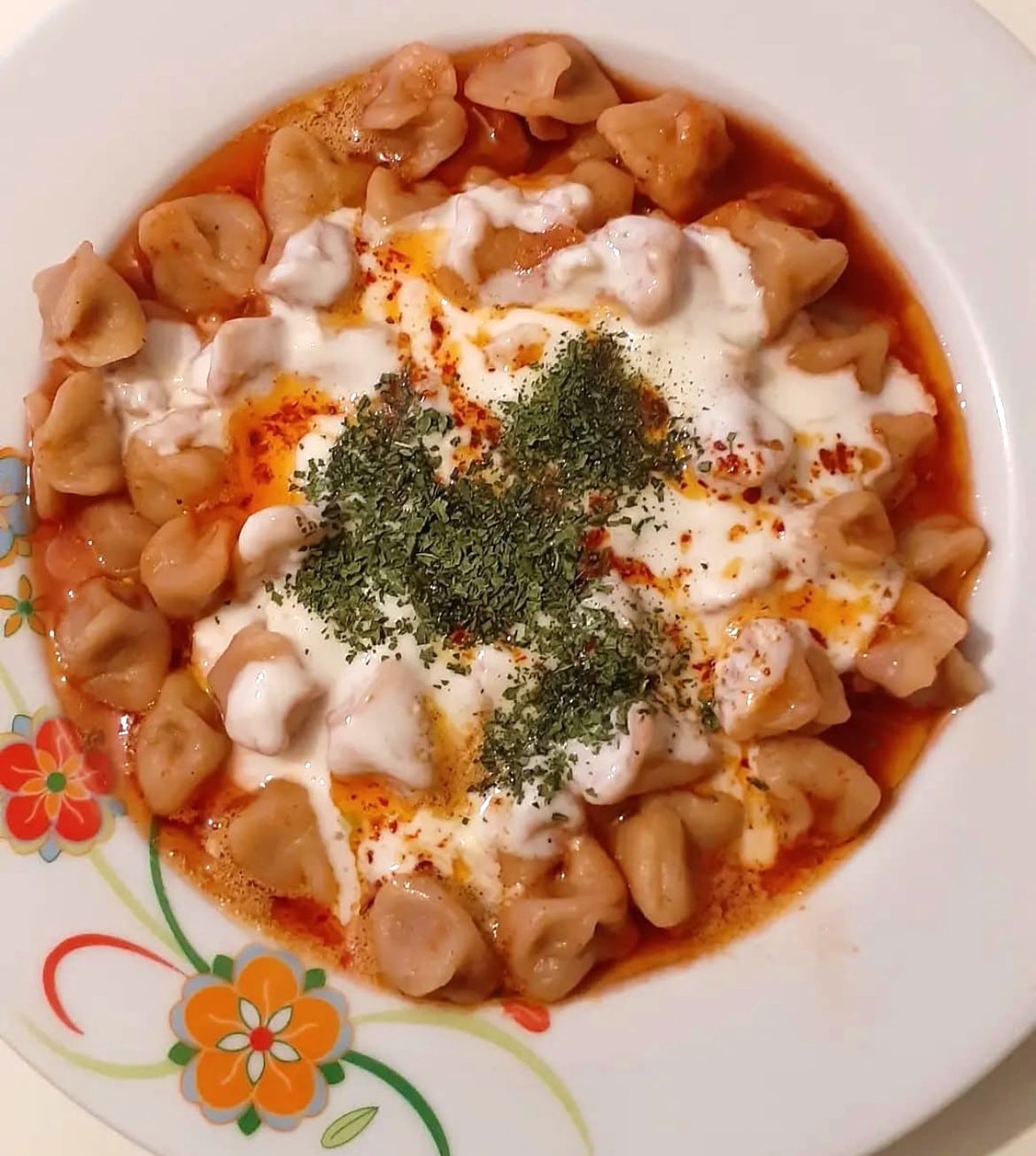
plate of manti
source: @neconunantakyayemekleri via Instagram
Manti are small, flavourful dumplings popular in Turkey, Armenia, and Central Asia. These tiny parcels are filled with spiced lamb or beef, then steamed or baked. Manti is traditionally served with a rich yoghurt sauce, garlic, and paprika-infused butter. Their intricate preparation and robust flavours make manti a cherished dish in Middle Eastern cuisine.
14. Gyoza: Japan’s Pan-Fried Favorite
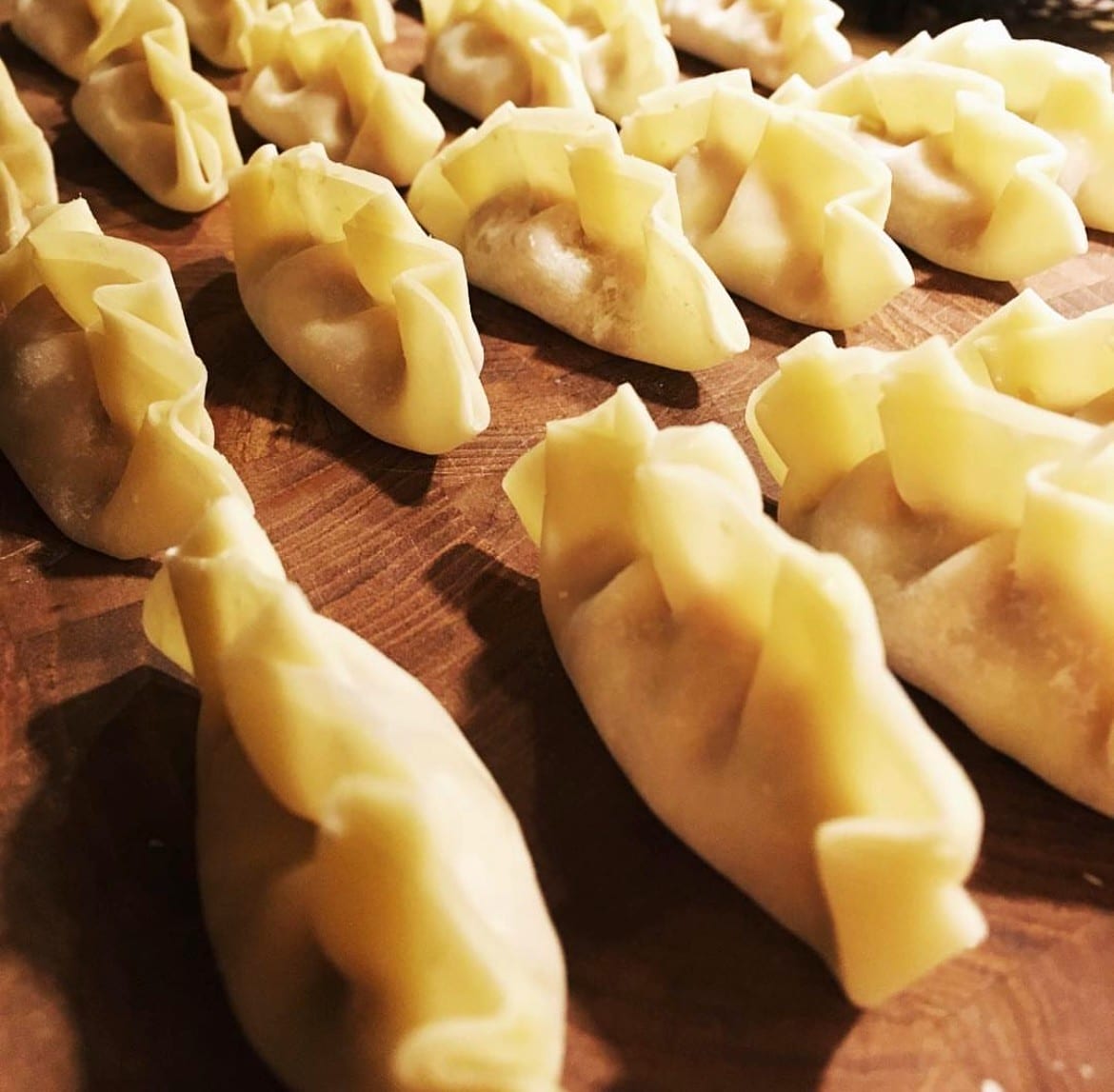
Gyozo
source: @kstadil via Instagram
Moving on to Japan, we find Gyoza, a type of pasta. They’re delicious pan-fried dumplings that people all over love. They have a crispy, golden outside and juicy filling, making them very popular.
Gyoza wrappers are usually made from wheat flour and water. This creates a thin cover that becomes crispy when fried. The filling can vary, but pork and vegetables are common choices.
Dipping Gyoza in a soy sauce-based sauce gives a great mix of textures and flavours. This will make you want to eat more!
15. Momo – The Tibetan Gem
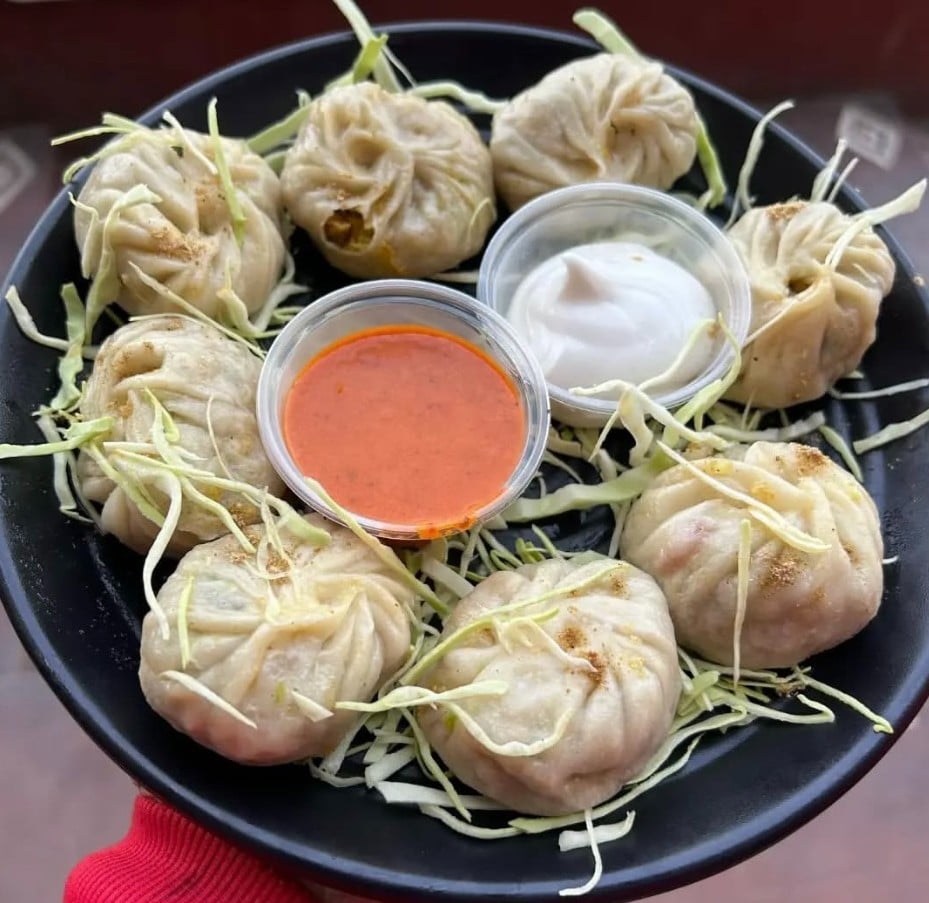
Plate of momos
source: @yumdelights1
Our last stop is the Himalayas. Here, we find Momo. This tasty dumpling comes from Tibet and is popular in Nepal and nearby areas.
Momos are famous for their juicy fillings. They usually have ground meat like yak, beef, or pork. They use tasty spices such as ginger and garlic, along with coriander. If you prefer, there are vegetarian choices, too, with ingredients like cabbage, tofu, or cheese.
These dumplings are steamed just right and served with a spicy dipping sauce. You can enjoy Momo as a snack or a light meal. It gives you a delicious taste of the Himalayas.
These were the top different types of dumpling you can find across the Asian world. There are many more different types of Chinese dumplings, but more on it some other time.
A Beginner’s Guide to Making Dumplings
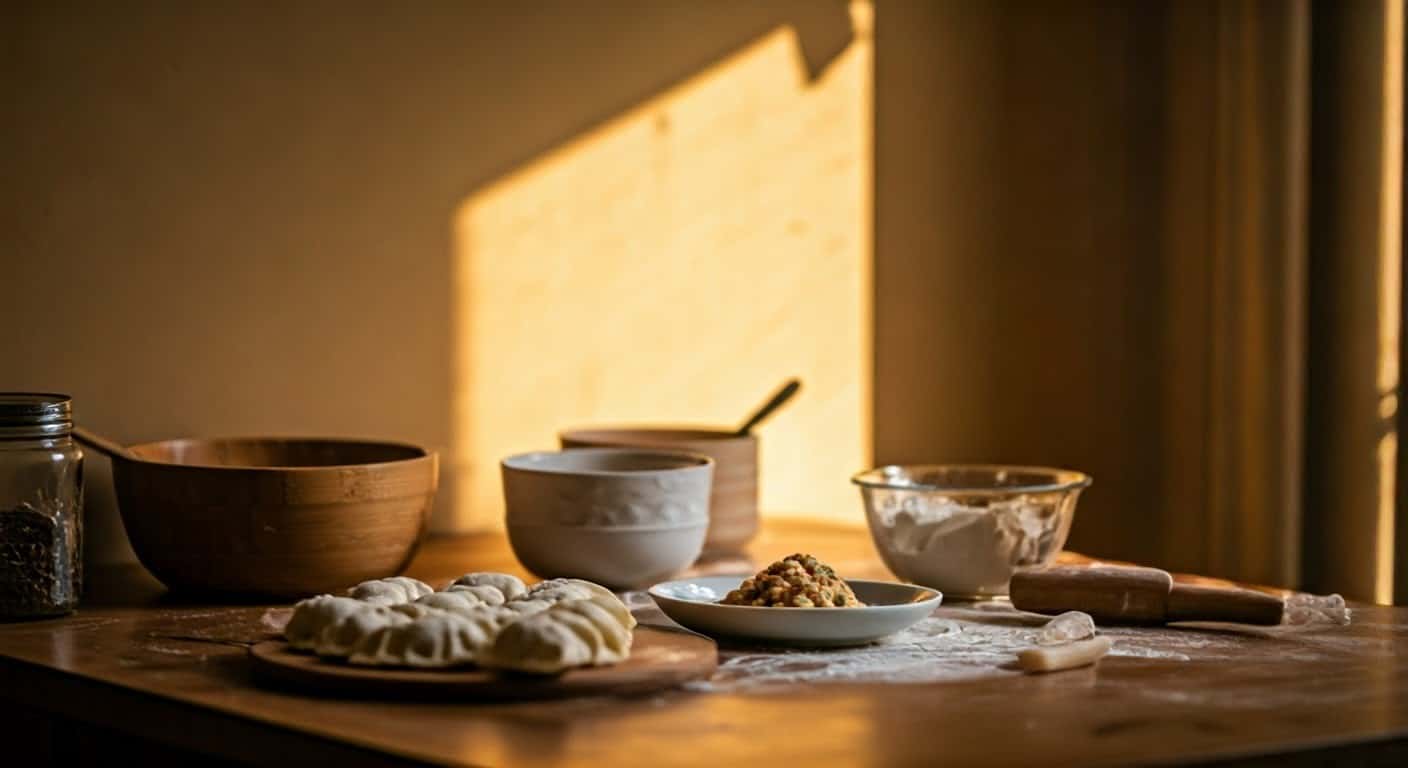
Dumpling making equipment and ingredients
Making different types of dumplings at home is simpler than you may believe! You need just a few basic tools, some easy-to-find ingredients, and straightforward methods. With these, you can whip up tasty dumplings that will wow your family and friends.
Check out our easy guide to enjoy making these delicious dumplings right in your kitchen.
Equipment and Ingredients You Need
Before we dig into making dumplings, let’s get all the tools and ingredients ready. You’ll need a rolling pin to shape the dough, a sharp knife for cutting and filling, and a steamer basket to cook them perfectly.
The basic ingredients for the wheat dough are easy – you need flour, water, and sometimes a little salt. You can try using different flours like whole wheat or gluten-free options. You can be very creative with the fillings! You can use ground meat with cabbage and bamboo shoots or vegetarian options like tofu and mixed veggies. Remember to prepare a dipping sauce. Soy sauce, vinegar, chilli oil, and sesame oil are great choices to start with.
The Art of Dough Making
The key to a tasty dumpling is excellent dough. Making the perfect texture might seem hard, but you can learn it quickly with practice.
Start by mixing wheat flour and water. Slowly add water until you get a soft and flexible dough. You can add tapioca starch to make it chewier for different types of dumplings.
Knead the dough for a few minutes until it feels elastic and smooth. Then, cover it and let it rest for at least 30 minutes. This will help the gluten relax, making the dough easier to use.
Filling Varieties: From Traditional to Innovative
Ground meat like pork, chicken, or beef is a good base if you like savoury food. Add finely chopped vegetables such as cabbage, carrots, or mushrooms, along with chives, to boost the texture and flavour. For a vegetarian option, you can use tofu, mushrooms, spinach, and other vegetables for tasty fillings.
Ground meat like pork, chicken, or beef is a good base if you like savoury food. Add finely chopped vegetables such as cabbage, carrots, or mushrooms, along with chives, to boost the texture and flavour. For a vegetarian option, you can use tofu, mushrooms, spinach, and other vegetables for tasty fillings.
Remember to add spices and herbs to make your dumplings even better. Ingredients like ginger, garlic, scallions, and some soy sauce work well in savoury fillings. Try using cinnamon, nutmeg, or a little citrus zest to enhance the taste for sweet fillings.
How to Make Dumplings: A Step-by-Step Guide
Are you ready to use those ingredients and your new dough-making skills? Follow these steps to make your own batch of homemade dumplings. They will taste as good as they look.
We will help you through every step, from preparing the dough to cooking those tasty dumplings just right!
Step 1: Preparing the Dough
Start by making the dumpling dough. Mix the flour and water based on your recipe. Slowly add the water and stir until the dough forms.
Knead the dough for 5 to 7 minutes until it feels smooth and stretchy. This helps create gluten, which makes the dumplings chewy.
After kneading, shape the dough into a ball. Cover it with a damp cloth or plastic wrap. Let it rest for at least 30 minutes. This resting time helps the gluten relax. This makes the dough easier to roll and shape.
Step 2: Crafting the Perfect Filling
While the dough is resting, it’s time to focus on the filling. First, heat a pan on medium heat. Then, add the ground pork. Cook it until it’s browned. Use a spoon to break it apart.
Next, drain any extra fat. Add the chopped vegetables, minced garlic, grated ginger, and chopped scallions. Cook everything for another minute until the vegetables get a little soft.
Season the filling with soy sauce, sesame oil, salt, and pepper. Lastly, let the filling cool completely before you start putting together the dumplings.
Step 3: Shaping Your Dumplings
- Take the rested dough and cut it into smaller pieces.
- Use a rolling pin to flatten each piece into thin circles to make dumpling wrappers.
- The thickness of the wrappers will change based on the type of dumpling you are making.
- Put a spoonful of filling in the middle of each wrapper.
- Be careful not to fill them too much. This could make the dumplings burst when cooking.
- Now comes the fun part – folding!
- There are many ways to fold the dumplings.
- You can make simple half-moon shapes or create more detailed pleats and folds.
- Have fun and try different styles!
Step 4: Cooking Techniques Explored
Cooking techniques are very important for the texture and taste of your dumplings. Steaming is a common method that results in soft and delicate dumplings.
If you like a crispy outside, try pan-frying or deep-frying. Boiling is also popular, especially for soup dumplings.
No matter the method you pick, make sure the dumplings are fully cooked. The filling should be hot and ready to enjoy!
Step 5: Serving and Enjoyment Tips
Congratulations on making your homemade dumplings! Now, it’s time for the best part – serving and enjoying them.
Place the cooked dumplings on a plate and serve right away. You can pair them with tasty dipping sauces to boost their flavours.
Soy sauce mixed with vinegar, chilli oil, or sesame oil are great options. Enjoy what you created and impress your loved ones with these tasty treats.
Conclusion
Traversing through the world of dumplings can be a fun experience. Dumplings show rich cultures from the traditional Modak in India to the tasty Xiao Long Bao in China, found at many local Chinese restaurants, and the warm Pierogi in Eastern Europe. It does not matter if you are new to cooking or a pro; learning how to make dumplings can make your kitchen lively. You can make delicious dumplings to share with family and friends with the right tools, ingredients, and tips. So, get ready to be creative with your fillings and enjoy the joy of making these tasty bites. Happy dumpling-making!
Frequently Asked Questions
What is the most popular dumpling in India?
In India, the most liked type of dumpling changes from one area to another. Yet, Modak stands out. It has a sweet filling and is linked to Lord Ganesha. People really enjoy it, especially during Ganesh Chaturthi.
Can I make dumplings without a steamer?
Sure! If you don’t have a steamer, you can cook your dumplings by pan-frying or boiling them. Potstickers, for example, are usually pan-fried until they are crispy and perfect!
Are there vegan options for dumplings?
Yes, there are many tasty vegan choices! You can start with a simple vegan dough. Then, get creative with fillings like tofu, vegetables, mushrooms, and tasty seasonings.
How do I prevent my dumplings from falling apart while cooking?
Make sure your dough is not too dry or too wet. Close the dumplings tightly. There should be no gaps or openings. Do not put too many dumplings in the steamer or pot. Keep an eye on the cooking temperature.
Can dumplings be frozen for later use?
Freeze uncooked dumplings on a baking sheet first. After they are frozen, move them to a bag or container that is safe for the freezer. To reheat, you can steam or boil them directly from frozen.







